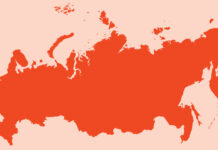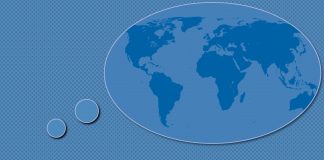A week ago, I wrote a piece on the stages of history, pointing out systemic shifts that have taken place for more than 200 years. In the last century, these shifts took place roughly 30-40 years apart with the last occurring in 1991, or about 30 years ago. That year, the Cold War ended, the Maastricht Treaty was signed, Operation Desert Storm began, and the Japanese economic miracle ended, opening the door for China’s rise. The world in 1989 was very different from the one in 1992.
We are now in an era in which shifts occur. Being in an era doesn’t necessarily mean the shift will immediately come; the change between the epoch of world wars and the post-Cold War world took almost 50 years, solidified as it had been by the U.S.-Soviet rivalry. It is uncertain why some eras last longer than others. It might well be simply chance. An alternative to consider is that some eras are based on single, very solid realities, while others are based on multiple and more fragile ones. Thus, the 1945-1991 era was based on the solid foundation of the U.S.-Soviet confrontation, while 1991-2022 was based on multiple forces – the global war on terror, the European Union, China emerging, Russia asserting itself, and so on. It was less coherent and therefore more fragile. Our current epoch began with more fragmented shifts, creating a less stable platform.
Whatever the reasons, the era that began in 1991 is coming to an end, and a new era is beginning. All the major northern entities or nations – China, the U.S., Russia and Europe – are undergoing profound changes. For Russia, the invasion of Ukraine is only the latest and most important attempt to reverse the events of 1991. But with a per capita gross domestic product ranking of 86, the turn away from communism may not be as profitable as was once thought. And with a military being outperformed by Ukrainian forces, it can hardly be considered a major military power. Put simply, Russia hasn’t lived up to its own expectations, so it will either undergo the revolution expected in the prior period, continue its aggressive moves using limited military capability, or end up as a minor power, albeit one with nuclear weapons.
The war in Ukraine has also changed Europe. NATO has reemerged as a primary, parallel system with the EU, one with somewhat different members, a different agenda and differing budgetary costs. More important, the trans-Atlantic relationship has been given new life, along with a greater commitment to military expenditures. This takes Europe into a fundamentally different configuration. First, as government expenditures rise and economic performance contracts under the pressure of conflict, the stresses within the EU will get worse. And with increased U.S. dependence, Washington may again be seen as an alternative economic partner to Germany. The European Union, already under centrifugal pressures, will have to redefine itself once again.
China is also in transition. It has undergone a period of breakneck economic growth. Like Japan before it, and the United States long before that, China has been in an extraordinary economic expansion. When Japan reached the limits of double-digit growth in 1991, its decline led to its replacement by China. Japan had surged its economy on a combination of low-cost exports, followed by advanced technology growth. It had financed this through a financial system that allocated capital on both an economic and political basis – through keiretsu, or families of companies. It surged on a disciplined workforce. It ran into intensive competition for low-value goods that undersold its own, as well as political resistance by its consuming countries, particularly the United States. This intensified with high-value goods like autos. As volume or margins declined, the fragility of the financial system revealed itself, and in the lost decade, it had to transform itself.
But now China’s low-end exports are eroding under competition, as are its high-end products, to say nothing of resistance to exports by consuming markets. An expansion that began 40 years before can’t sustain its growth rate. Exports come under pressure, and the financial system does too. In China’s case, this happened in the real estate sector, which is used as a failsafe. Failures in this sector, including defaults, inevitably destabilize the economy and thus create political tension. Dramatically slower growth in China is likely, with large numbers of Chinese citizens who never fully benefitted from previous growth, a dangerous situation.
The United States is still the strongest power in the world despite domestic discord and economic pressure. That discord is cyclical, and it presages an economic surge built on new technology. But for now, American economic power, seen most recently through the use of the dollar against Russia, still stands tall. The United States is the least likely of the four majors to require institutional change, which has helped it to maintain its position since 1945.
The prior assumptions about Russia and China as emerging powers are now questionable at best. Things change, but today it’s hard to see a Russian resurgence or a rapid end to China’s economic problems. So if we are at the beginning of a cyclical shift, as I think we are, the U.S. will be one of the pillars of the transition to the new era. It is hard to visualize the rest. Who would have thought in 1991 that China would surge, or in 1945 that Europe would rebuild itself as it did? The easy part of this project is done, I think, and it is time to look for the unimaginable that exists in any epoch.







